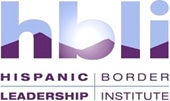|
SUMMARY
The proliferation of high-stakes tests is having a negative effect on minority youth, education offerings, the country as whole; and it will get much worse.
There is no good evidence that high-stakes tests improve education.
Contents of presentation:
- History of Testing
- Educational Issues
- Effects
- Technical Issues in development
- Future Issues and NCLB
- Suggestions on actions
- Comments on "tricks" of the testing trade
History of Testing
- Statewide testing systems began to proliferate in the South during the desegregation of Southern schools and faculties. The test had an expected negative effect on the African American teachers who had taught in the previously segregated schools.
- Significant educational literature has linked the use of IQ tests and the SAT to discriminatory attitudes against minority students, see, for example, "The Big Test" by Nicholas Lehmann.
- A new proliferation of tests began after publication of the study "A Nation at Risk."
Educational Issues
- Testing becomes assessment and accountability.
- Testing is easy, comparatively cheap, and confirms stereotypes.
- Testing creates tensions between needs of politicians, school personnel, and the needs of students.
- Testing violates the fundamental educational standard that more information from a variety of sources helps to make better decisions.
TRICK - multiple compensatory criteria compared to multiple conjunctive criteria. Standards require alternative criteria to be used as an option in high-stakes decisions, and that factors used can offset each other. Factors should not just be multiple hurdles.
- Phases of testing - generally states have followed this chronology in their movement toward increasing use of high-stakes tests.
- Teacher tests
Tests for student admission to programs
Tests for graduation from programs
Teacher certification tests
Pressure on schools of education
- Tests for students
Tests to look at state and districts
Basic skills to subject matter tests
Use for placement and assessment
Put high stakes on graduates for basic skills
Put high stakes on lower grades for basic skills
Put high stakes on graduates for subject matter tests
- Test to hold schools "accountable"
Disseminate school results
Label low-performing, etc.
Appoint committees to help
Appoint masters
Disassemble schools
Encourage/allow students to transfer out of low-performing schools/tie to charter schools and vouchers
|
|
Effects
- Losing many Latino, African American, Native American, and some Asian American students
- Arizona Results.
8th grade Math AIMS scores 2001
Hispanics, 62% Falls Far Below
Black 71 % Falls Far Below
Caucasian, 22% Falls Far Below
- Diplomas-in 10 years of TAAS in Texas over 100,000 Latino grads were lost
- Look at total rate of persons who took test compared to persons who pass.
- Retentions
Jumped in Texas immediately after TAAS from about 5% to about 25%, i.e. 9th grade/8th grade ratio for Latinos and Blacks 1.25 and for Whites 1.10
- Dropouts
- Loss of minority students, 9-12th grade comparison, increased from 40 % to 50% since implementation of TAAS test.
- Minority white gap has increased form 15% to 22%
TRICK: DROPOUT DEFINITION. STICK WITH 9-12 COMPARISON, OR EVEN 8-12 COMPARISON.
- State definitions of dropouts notoriously faulty
NCLB definition good one-compare number of students entering high school to number graduating three (for high schools starting in 10th grade) or four (for high schools starting in 9th grade)
- Curriculum-Special negative effect of standardized testing on minority districts
- Special Ed.-sometimes districts react to low test scores by putting potential low test scorers in special education
Technical Issues
- Mistakes on tests
- Validation and reliability
Process completely circular and closed
Committees and process of test development manipulated
But process and questions have improved some
Lack of relation of test scores to grades
- Opportunity to Learn crucial to validity, but validation studies do not do differential study by race to determine if different racial ethnic groups have had substantially similar opportunity to learn.
- Item Selection procedures often more likely to choose questions with greatest difference between White students' scores and minority students' scores.
Future Issues and NCLB
- NCLB requires yearly tests at 3-8.
- Disaggregated data and requirements
- 12-year plan to bring all to "Proficient" level.
- Highly qualified teachers-will rely heavily on testing.
- Drop out definition good in law and committee report. SAVE IT
Some Recommendations
- Legislation to require multiple compensatory criteria, and tests count less than 50%
- Real indicators of quality are class size and qualified faculty-PUT MONEY THERE
- Start or support community and teacher organizations, PTA etc.
- Make sure results are out with racial ethnic information
- Continue study, get copies of National Academy of Science report on High Stakes testing.
- Bring in your own expert to do report on validation, reliability, and test use. WestEd studies are a very good start.
- Use good definition of dropouts and watch numbers closely.
- Get involved and follow up on NCLB plan.
|
|

